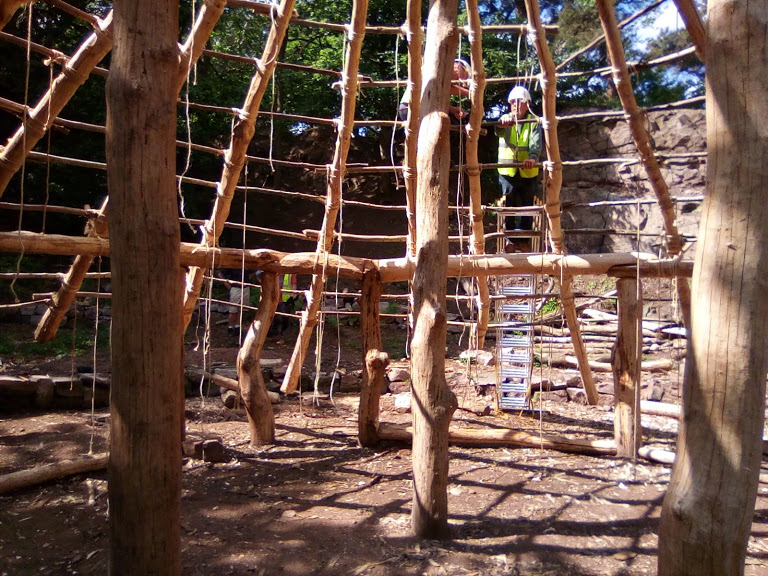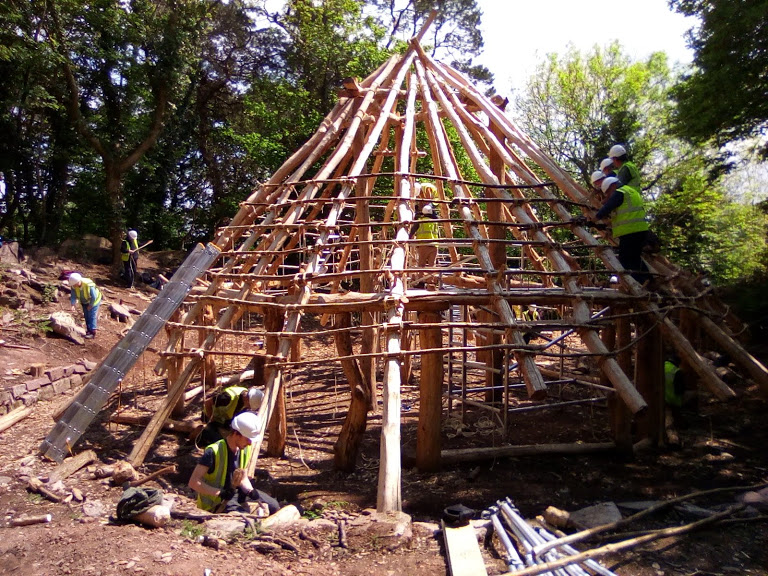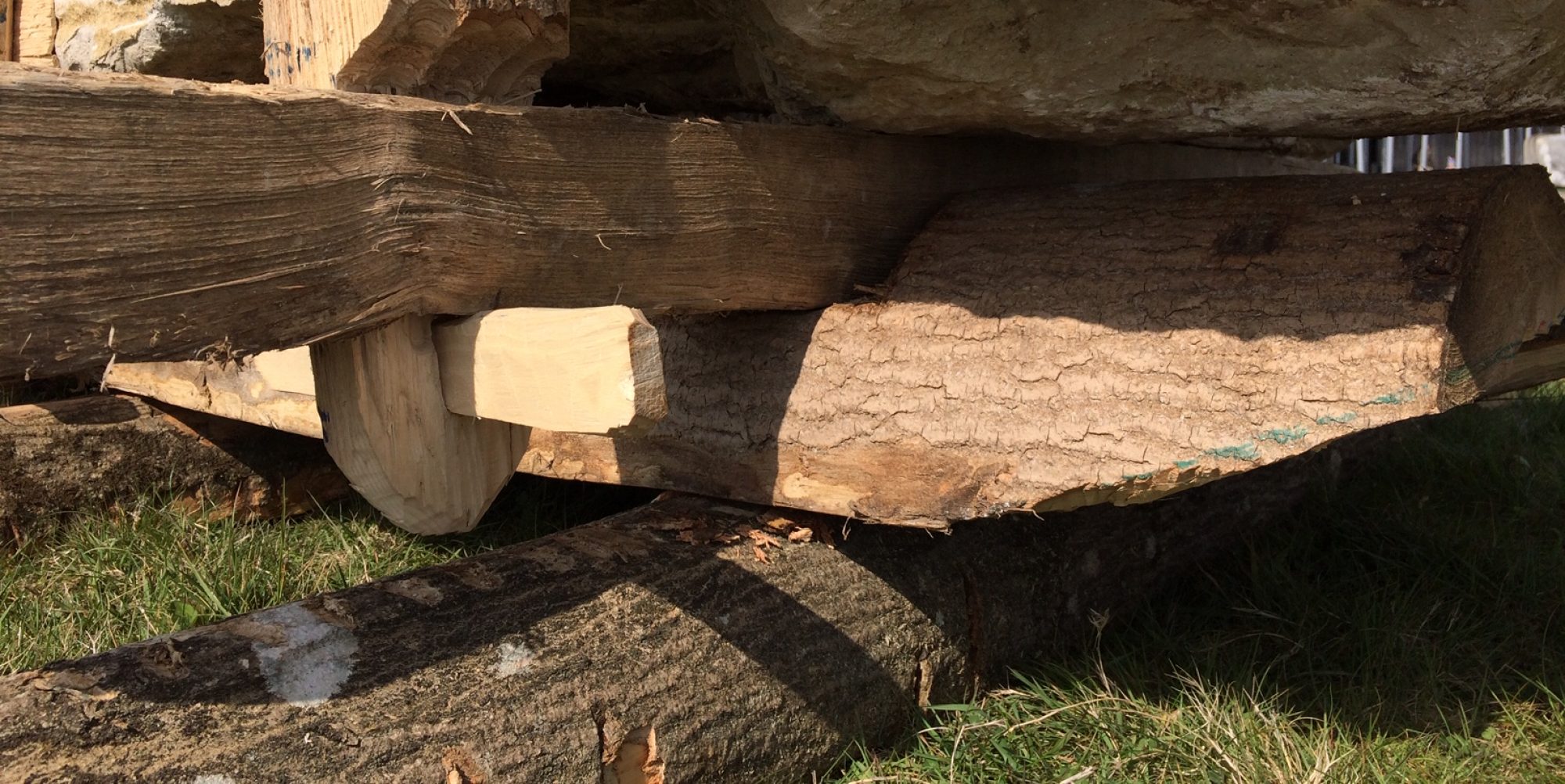13th – 17th May 2019
Phase 2 Construction Week 7
We have returned to a week of glorious sunshine and calm. The building looks beautiful and some of our core volunteers have returned from well earned trips away – the team is whole again.
This week sees the installation of batten rings that are lashed to the rafters, forming a conical ladder up the roof. There are three priorities this week, Lashings, Lashings, and Lashings!
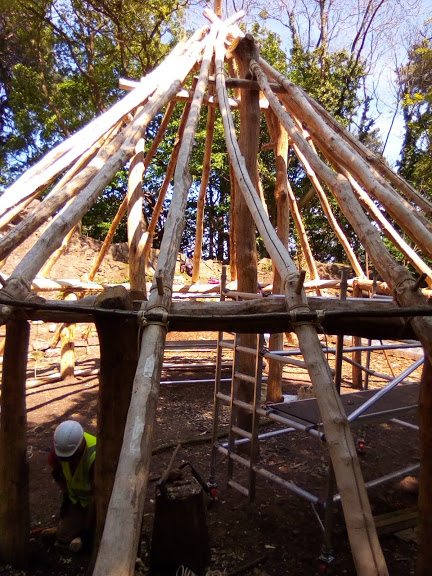
There are 25 rafters, and 17 rows of battens, which means we have in the region of 425 lashings to complete! The use of lashings in this building raises an interesting question. Over the years, I have constructed many buildings, using experimental and “known” methods of construction. The method used to attach the smaller roof elements to the rafters is still open to debate. Firstly, we mustn’t assume any single method for this across geographical, ecological and cultural zones. Local materials, cultural practice and concerns of longevity will all have a part to play in the material selection and development of technique for any process in the past.
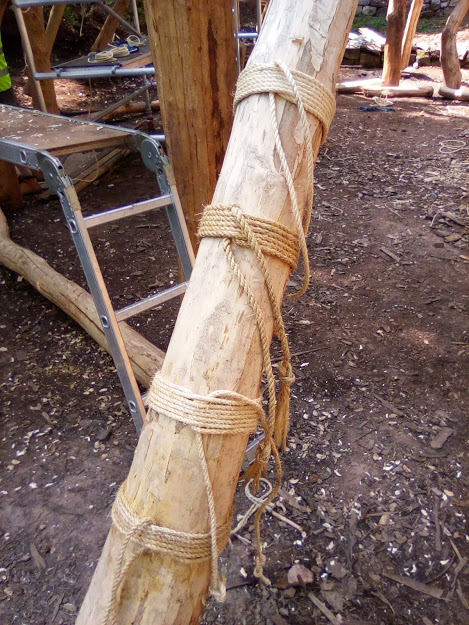
If we had access to unlimited coppiced materials, it would be just as easy to weave the roof (bending the coppiced rods between the rafters themselves) to form a large basket. I have used this method on several occasions to great effect, but it is very hungry for coppiced materials. If we had access to large quantities of freshly harvested willow wands, we could use them as ties. Access to a lime grove, or fields of nettles, or brambles would allow us to produce large volumes of fibres that could be transformed into rope. An area of thick gorse would allow us to form a thick blanket of densely packed material that we thatch directly into. The landscape setting, its geology, and therefore, the species that grow there, make for any number of solutions to the roofing stage of a building.
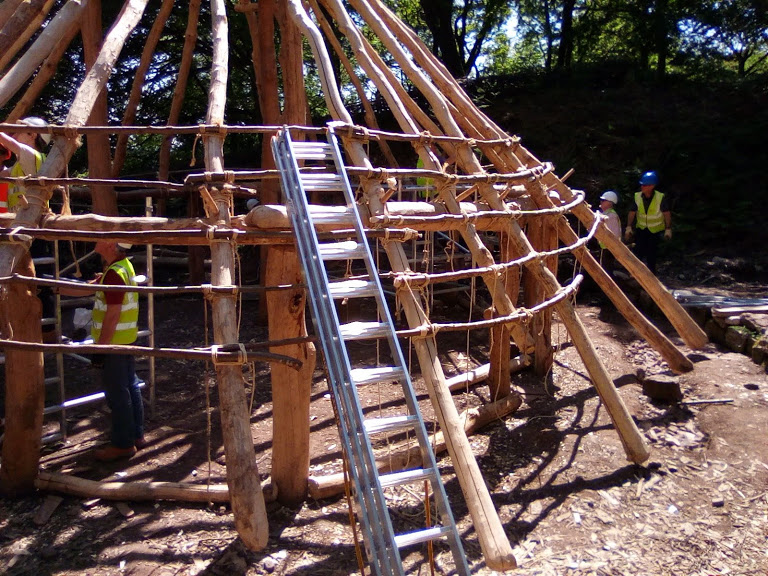
All of these solutions require time and effort to achieve, whether it be in the growing and harvesting of coppice materials, the harvesting and preparation of natural fibres, and the making of rope. Our project is not a full scale experimental project, – in other words, we are not doing every stage of construction using authentic bronze tools, and we are not harvesting all of our materials authentically. We have a deadline and a need to produce a fully functioning building that will last for many years, so our experimental potential is understandably limited by these factors (it should be remembered that most experiments fail!). This project is utilising pre-made natural fibre (in this case, sisal) string as its main lashing material. It is a material that I am generally unfamiliar with in a construction setting, and we have had to learn as we go regarding its properties and best use. Sisal seems to expand significantly when exposed to atmospheric moisture or rain, so we are pre soaking the lashings to ensure a tight fit over time, and stretching them as much as possible as we go with the use of oak pegs to apply direct leverage to the rope. As a fibre, it is also brutal on the hands (similar to willow bark rope) and so gloves are the order of the day!

The batten rows are spaced at 16 inch intervals up the rafters to give the right spacing for tying on thatching bundles later on.
As with all tasks on this project, finding a rhythm is critical. By that I mean that each member of a team finds their own role, or sequence of roles, and fulfils them efficiently, without the need to stop and think “what next?” It takes time to reach this stage, but then the process flows at its optimum.
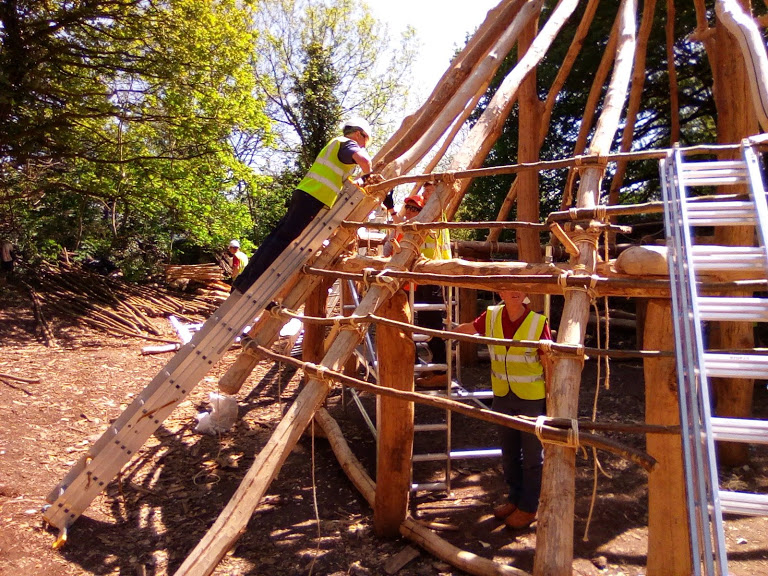
As the battens progress up the roof, the volunteers have to be aware of “corners”, where a rafter sits awkwardly beyond the natural roof line. These corners are best negotiated by ensuring two battens don’t meet there – forming two ends that stick out a bit like cow horns. These projecting battens will only cause us issues later when we come to thatch the roof. Although each batten ring shortens in length by around 2 metres on each level, the number of lashings doesn’t change – so once again, the task is labour intensive!
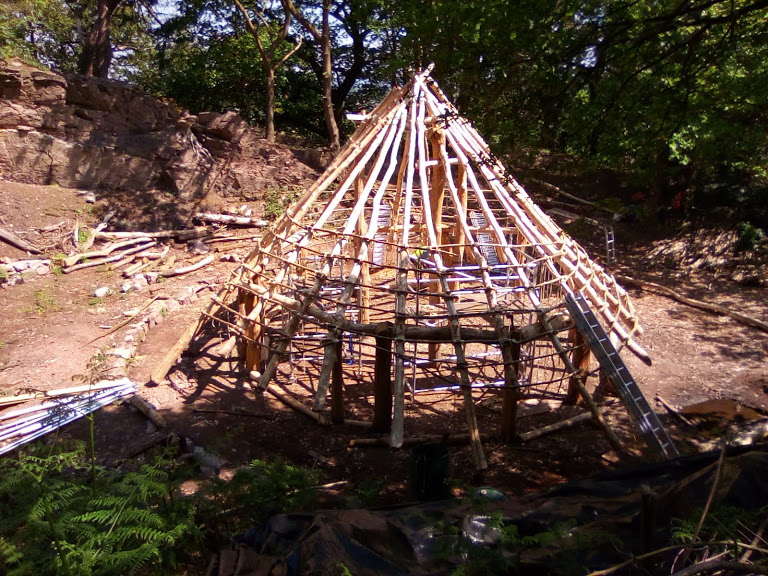
While teams have been lashing the battens, other teams have been producing thatching needles in preparation for the next phase of construction. These shaved wooden “swords” will take the thatching strings through the roof to physically stitch the thatch into position on the battens.

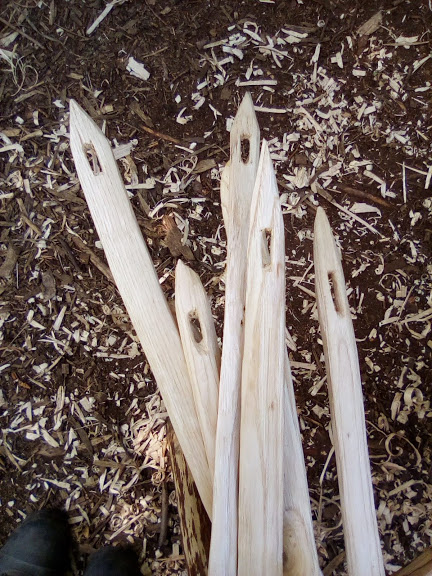
Edwin and team have also pushed hard this week to complete the stunning oak gate that will be the official entrance to the roundhouse compound. What an achievement! so much work, hewing planks, cutting joints, making and fitting pegs, but what a result! Well done gate team!
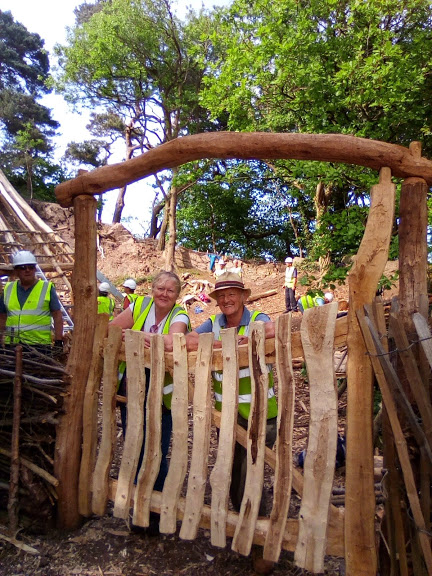
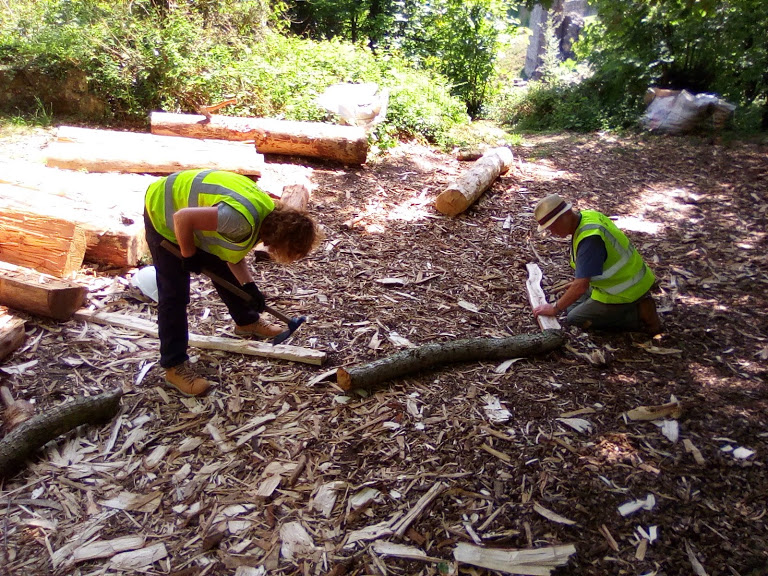
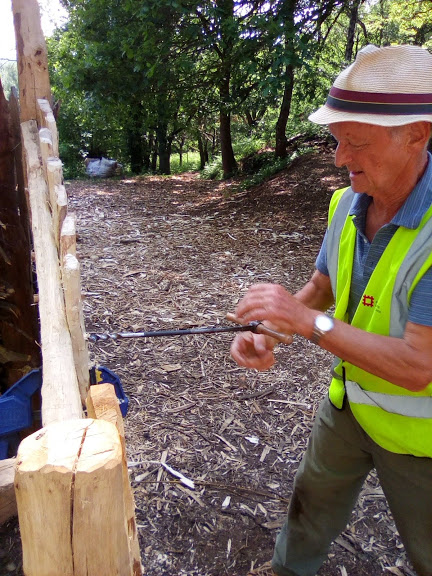
The central rafter that marks the middle of the doorway has also been refined and stabilised with the addition of a shaped timber corbel. This neat solution enables the rafter to be securely pegged into solid timber on a post that is already complicated with the meeting of 4 timber elements.
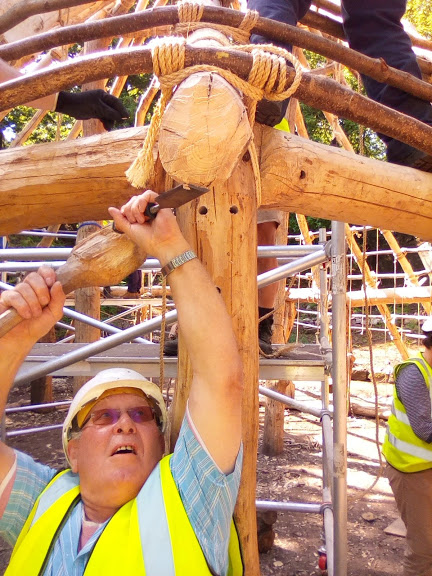
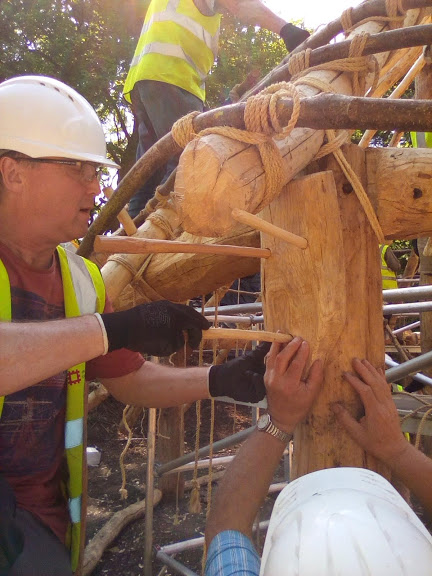
And while all this was going on, more volunteers have been working hard to install sill beams between each pair of wall posts to provide a solid base for our woven hazel walls to sit on. Each timber is augured to provide location holes for the wall uprights (or Zales), and need to fit securely to prevent movement.
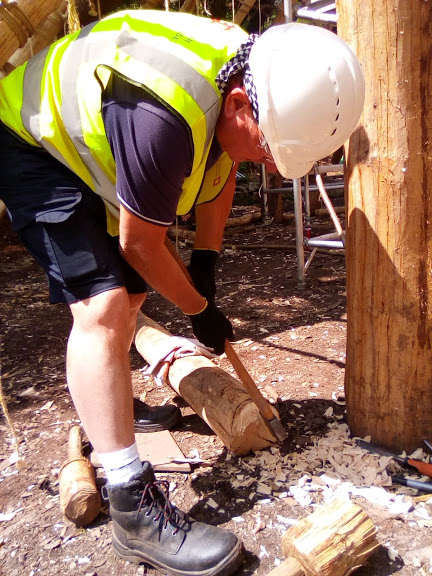
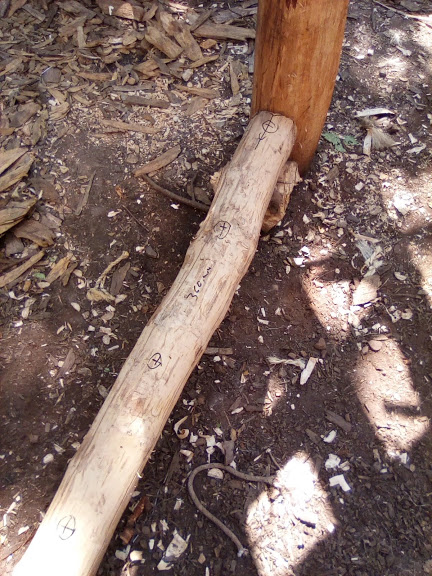
The issues of sisal stretch have dogged us somewhat this week, and required the re-tightening of many lashings as we have gone along. Despite our best efforts, there seems to be no real pattern of loosening, regardless of soaked or dry rope. As a result, and despite huge effort, we have not achieved what we hoped we would at the beginning of the week. But perseverance and sweat have saved the day, along with the continual development and refinement of lashing method and we now stand poised to finish the battens and begin thatching in the next visit.
